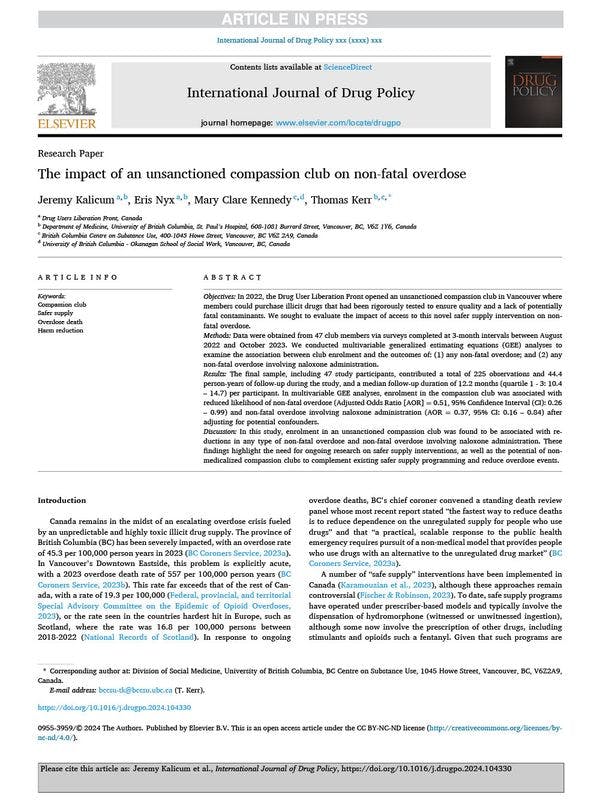The impact of an unsanctioned compassion club on non-fatal overdose
Abstract
Objectives
In 2022, the Drug User Liberation Front opened an unsanctioned compassion club in Vancouver where members could purchase illicit drugs that had been rigorously tested to ensure quality and a lack of potentially fatal contaminants. We sought to evaluate the impact of access to this novel safer supply intervention on non-fatal overdose.
Methods
Data were obtained from 47 club members via surveys completed at 3-month intervals between August 2022 and October 2023. We conducted multivariable generalized estimating equations (GEE) analyses to examine the association between club enrolment and the outcomes of: (1) any non-fatal overdose; and (2) any non-fatal overdose involving naloxone administration.
Results
The final sample, including 47 study participants, contributed a total of 225 observations and 44.4 person-years of follow-up during the study, and a median follow-up duration of 12.2 months (quartile 1 - 3: 10.4 – 14.7) per participant. In multivariable GEE analyses, enrolment in the compassion club was associated with reduced likelihood of non-fatal overdose (Adjusted Odds Ratio [AOR] = 0.51, 95% Confidence Interval (CI): 0.26 – 0.99) and non-fatal overdose involving naloxone administration (AOR = 0.37, 95% CI: 0.16 – 0.84) after adjusting for potential confounders.
Discussion
In this study, enrolment in an unsanctioned compassion club was found to be associated with reductions in any type of non-fatal overdose and non-fatal overdose involving naloxone administration. These findings highlight the need for ongoing research on safer supply interventions, as well as the potential of non-medicalized compassion clubs to complement existing safer supply programming and reduce overdose events.
